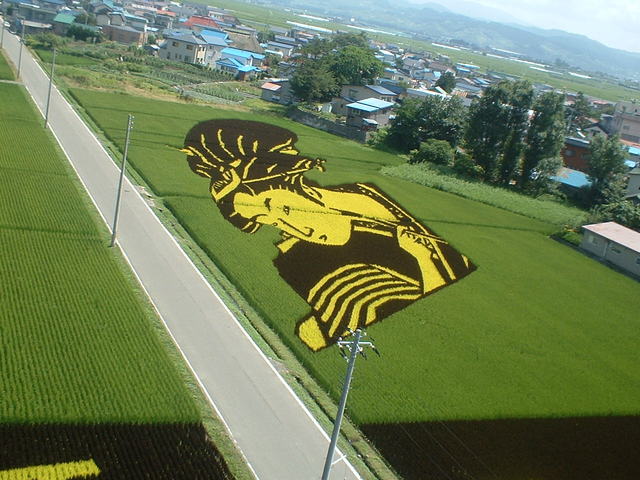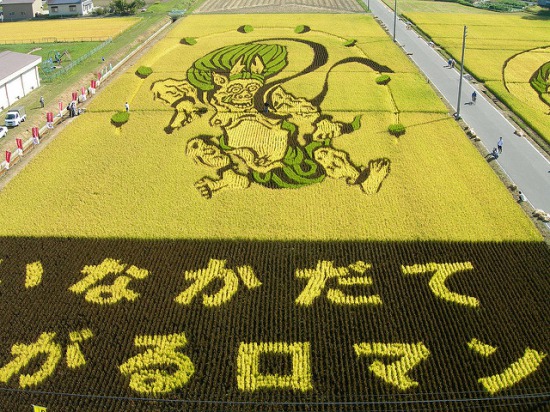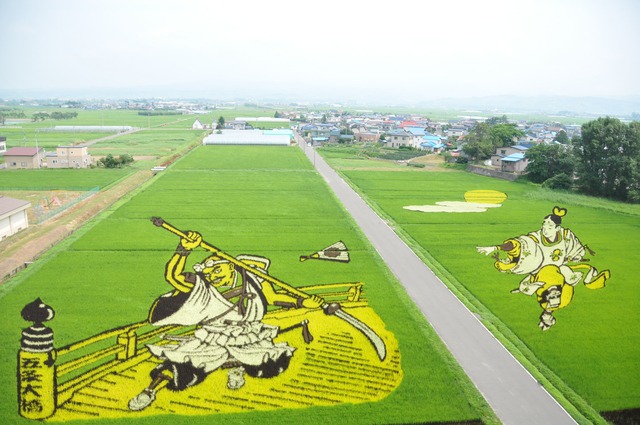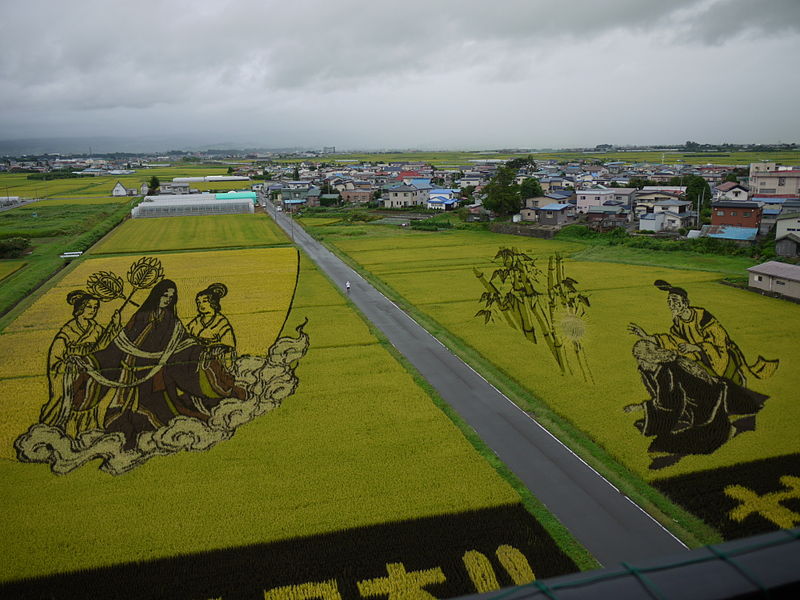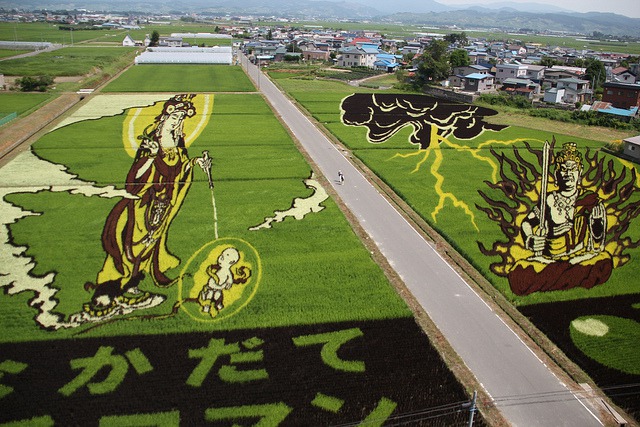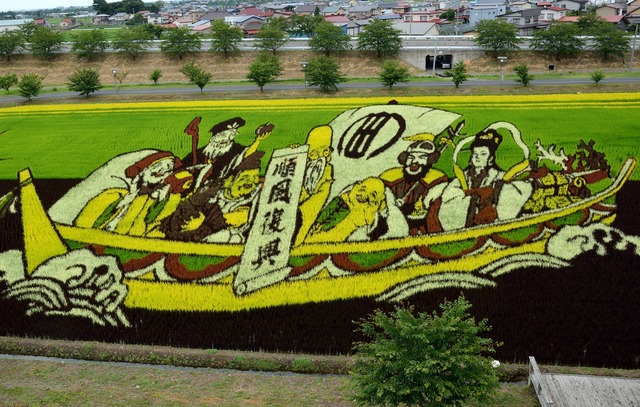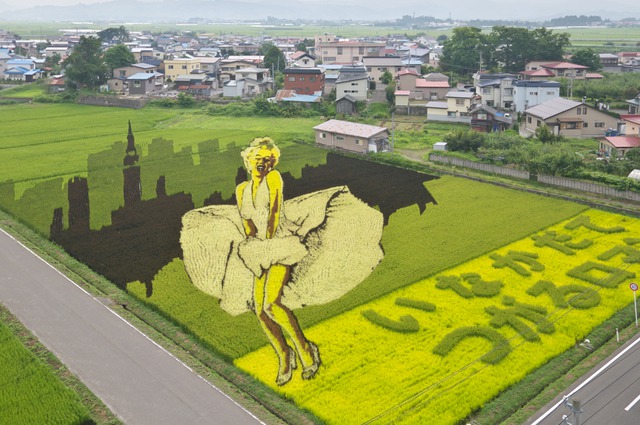
Rice fields are canvases for Japanese people! Amazing art in rice fields.
Amazing art work at Inakadate village in Aomori prefecture.
This post may contain affiliate links. If you buy through them, we may earn a commission at no additional cost to you.
As you all know, Japanese love eating rice.
Rice is an essential staple of Japanese food.
The amount of self-sufficiency of rice in Japan is very high, about 95%, and the scenery of rice fields is a national symbol of the Japanese countryside.
Beautiful rice plants under the blue summer sky...
Shining golden ears of rice in autumn...
Rice fields make the Japanese countryside more beautiful in all four seasons.
These days, there is a new challenge on those rice fields called 'rice field art'.
They turn rice fields into big canvases and make pictures by using many different kinds of rice plants in the fields.
It all started in Inakadate village in 1993. Since then it has spread all across the country. Now there are more than 100 rice field art locations all over Japan.
At Inakadate village they change the motifs every year. Many tourists visit this village to see the beautiful art work.
I cannot believe they are all made by rice plants... Only rice plants.
Let's see the history of rice field art in Inakadate village!
2006, Famous painting, Fujin-Raijin
bebot/FlickrFujin (the god of wind) and Raijin (the god of thunder) paintings were made with the catch phrase 'Let's blow the economic depression away!'. These are originally from the famous painter Ogata Kōrin.
2007, Hokusai
Hokusai's famous painting of waves and Mt. Fuji are recreated beautifully.
2008, two of seven gods, Ebisu and Daikoku
2009, two warriors!
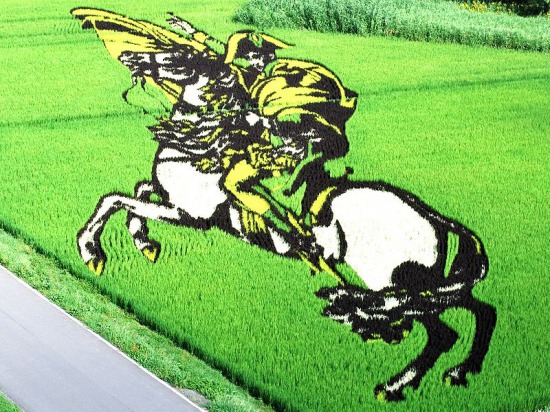
Captain76/Wikipedia
On the left is a famous samurai known for his worrying, while on the right is Napoleon. These are two very unique motifs.
2011, The tale of the bamboo cutter
The motif is from a Japanese fairy tale. Truly, the colors are clear and vivid enough to make it hard to believe that they are just rice plants.
2012, Japanese buddhist statues and seven gods
Now, rice field art can be found in more than one hundred places throughout Japan. It is said the art in Inakadate village, the pioneer of this art form, has the best quality image and so is considered the most beautiful in Japan.
As we looked at the history of the art, we can definitely see great improvement each year.
Especially the art works these days is too vivid and colorful to believe they are made only by rice plants.
The greatest point of this art is that they never cut or color the rice plants. They rely on the natural color of the plants to define and detail the pictures.
I wonder what they will surprise us with this year. What would you like to see in the rice fields?
The information in this article is accurate at the time of publication.

